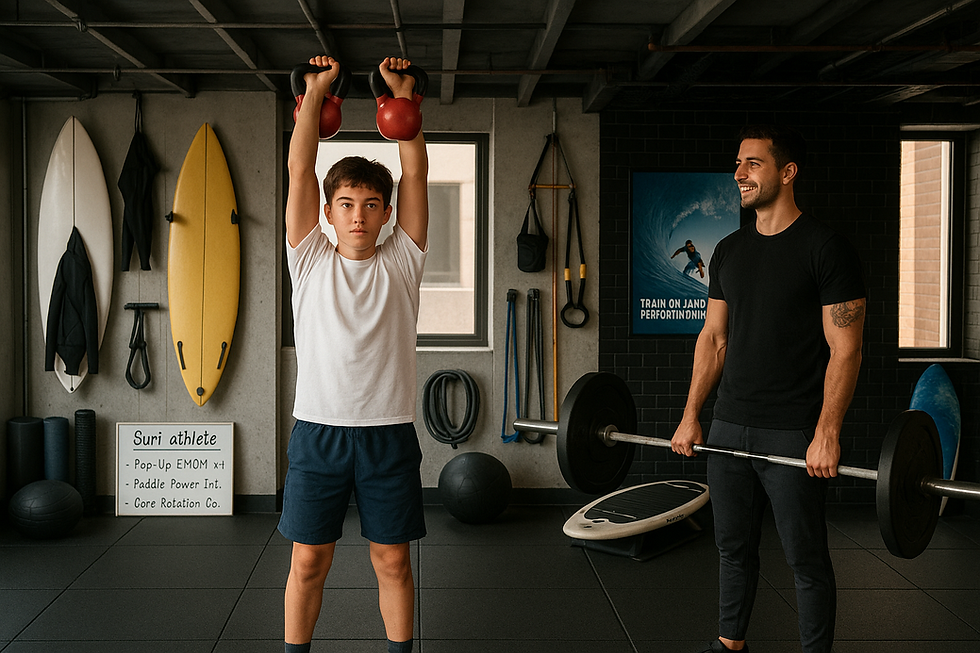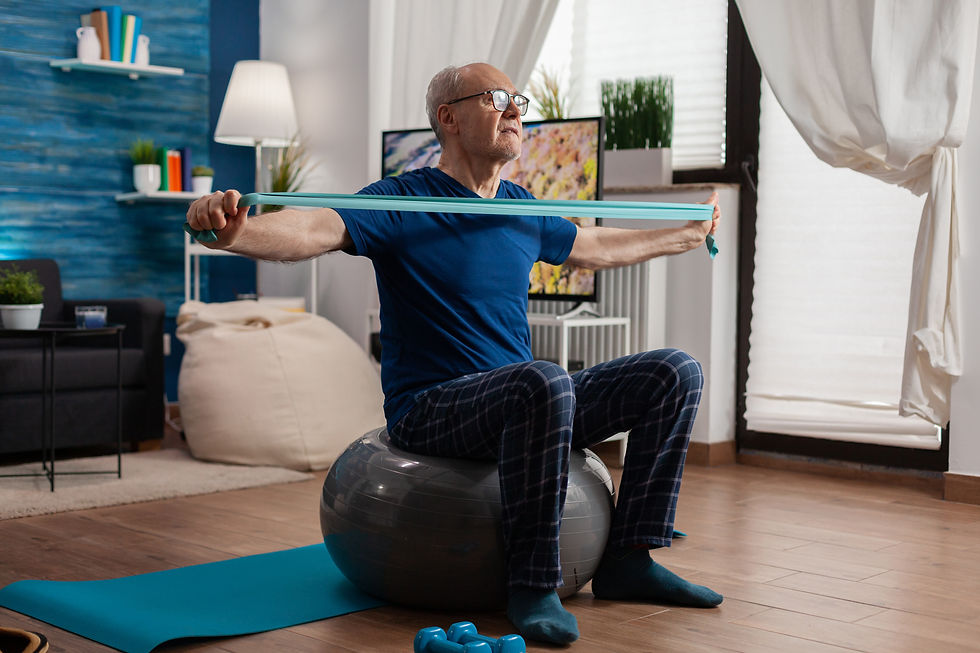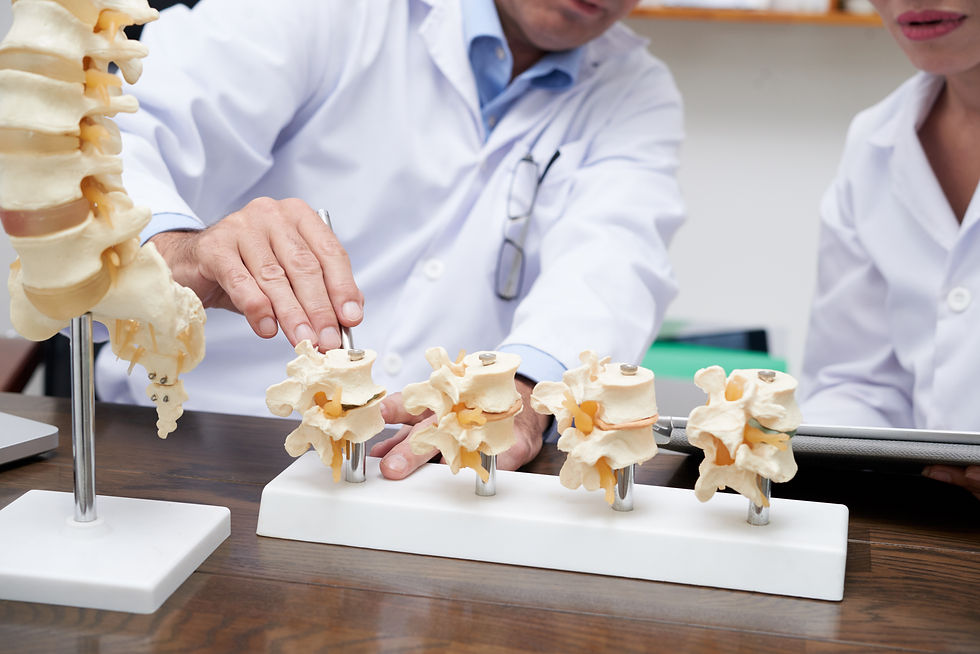Unlock Rotational Power: Core Stability Training for Elite Surfers
- Jordan Pollard

- May 6
- 3 min read
Updated: May 6
Train your core to carve, rotate, and stay on rail.

Why Core Rotation & Stability Are Critical in Elite Surfing
Modern surfing demands high-level athleticism. You’re performing high-velocity maneuvers on an unstable surface, relying on your ability to generate torque and maintain balance while constantly reading shifting conditions. At the heart of every explosive snap, carve, and cutback is one major player: your core.
The core doesn’t just stabilise your trunk, it acts as the engine and transmission for power transfer between your upper and lower limbs. A weak or asymmetrical core can disrupt this energy flow, leading to incomplete maneuvers or falls that end your ride prematurely.
Inconsistent wave direction, repetitive stances, and dominant-side loading can also lead to rotational imbalances, which is why elite surfers must train rotational symmetry and stability to ensure performance longevity and injury prevention.
The Role of the Core in Surfing: Beyond Aesthetics
The core includes not just your abs, but your deep stabilisers: the transverse abdominis, internal & external obliques, multifidus, and pelvic floor. These muscles work together to:
Stabilise your spine during load transfer
Generate rotational torque through your hips and shoulders
Absorb impact forces from landing or wave transitions
Support your balance during paddling, pop-ups, and rail-to-rail movement
Surfing is a rotational sport. And in the ocean, you’re rarely moving in one plane. Every functional turn depends on controlled, reactive core strength.
Rotational Imbalance in Surfers: The Hidden Performance Limiter
Frontside vs backside surfing, goofy vs regular stance, and repetitive movement patterns all create rotational asymmetry. Over time, this imbalance:
Reduces performance on one side
Increases injury risk (e.g., low back pain, oblique strain)
Limits adaptability to different wave breaks
Want to test your symmetry? Try this:
Seated Trunk Rotation Test: Sit on the floor with legs straight. Rotate fully to each side. Is one side tighter or less powerful?
Split Stance Anti-Rotation Hold (with band or cable): Hold for 10 seconds each side. Feel a strength or stability discrepancy?
Balance isn't just about your feet, it's about how your core integrates both halves of your body.
Principles of Core Training for Rotational Power and Stability
To train like you surf, your program needs to be:
Multi-planar: replicating the angles and transitions of surf movement
Load-responsive: using resistance or instability to build control
Explosive and stabilising: combining rotation and anti-rotation elements
Three Training Priorities:
Rotational Strength (power transfer)
Anti-Rotation Control (injury prevention)
Dynamic Stability (surf-specific functionality)
TIP: Combine stability and power exercises in a single session to mimic the reactive demands of the ocean.
Surf Performance Core Routine
Below is a performance-focused progression split into three phases. Each exercise prescription includes sets, reps, and tempo guidance for elite-level training.
A. Activation & Stability (Pre-Surf / Warm-Up)
Prepares the CNS, builds foundational control
Exercise | Sets | Reps | Tempo |
Dead Bug with Reach | 2–3 | 8–10/side | Slow |
Bird Dog with Knee Tap | 2–3 | 10/side | 2–0–2 |
Bear Crawl with Pause | 2–3 | 10–15m | Controlled |
B. Anti-Rotation & Control (Foundational Phase)
Builds core stiffness and resists unwanted torsion
Exercise | Sets | Reps/time | Tempo |
Pallof Press (Tall Kneeling) | 3 | 10–12/side | 2–1–2 |
Side Plank with Row | 3 | 8–10/side | Controlled |
Half-Kneeling Cable Anti-Rotation Hold | 3 | 20s/side | Static Hold |
C. Rotational Power (Surf-Specific Transfer Phase)
Translates control into explosive, surf-style torque
Exercise | Sets | Reps | Tempo |
Medicine Ball Rotational Slam | 3–4 | 6–8/side | Explosive |
Landmine Rotation (Split Stance) | 3–4 | 8–10/side | 1–0–1 |
Resistance Band Surf Rotations | 3–4 | 10–12/side | Controlled |
Russian Twists (Feet Elevated) | 3 | 12–16 total | Controlled |
Periodisation: Integrating Core Training into the Surf Season
Different phases of the surf calendar call for different training intensities:
Off-season → High-volume + slow tempo for motor control
Pre-season → Higher load, integrated core + surf drills
In-season → Maintain with focused anti-rotation & activation
Pre-competition → Core activation circuits, avoid soreness or DOMS
Pro Tip: Rotate unilateral core exercises weekly to balance left and right side dominance.
Common Mistakes in Core Training for Surfers
Avoid these pitfalls:
Only training sit-ups or crunches 🛑
Ignoring the transverse plane (rotation)
Neglecting anti-rotation control work
Skipping mobility and pre-surf warm-ups
Relying on gym machines instead of body-driven resistance
Build a Core That Matches the Ocean’s Demands
Elite surfing is all about dynamic control, rotational efficiency, and balance under chaos. A strong, symmetrical core won’t just keep you upright, it will allow you to express power on rail, recover from critical positions, and outlast your competition in performance and longevity.
Train smart. Rotate stronger. Live Younger for Longer.
Download 5 free surf-specific exercise programs to enhance your surfing and perform better, stronger manoeuvres.
Download here:



Comments